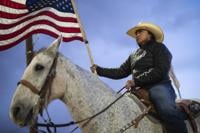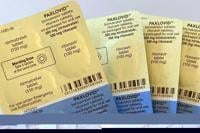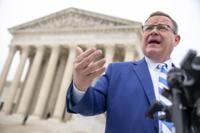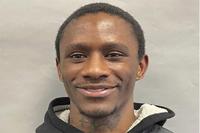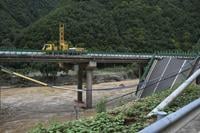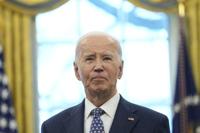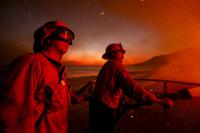DILKON, Ariz. (AP) — Felix Ashley’s red Toyota sends a plume of dust billowing along the sloping hills and boulders he traverses hours every week to pump water – the same roadway voters walk miles every four years to cast their ballots in presidential elections.
Here on this forgotten swath of the Navajo Nation, the largest Native American reservation in the United States, hardship is embedded into day-to-day life.
Nearly a third of homes like Ashley’s still don’t have running water. Soaring unemployment and poverty has pushed young Navajos, including most of Ashley’s children, to leave their sacred lands in search of jobs. Logistical and legal obstacles have long stood in the way of Arizona’s 420,000 Native citizens casting their vote.
“People lose trust in the government and they don’t – you don’t – care to vote anymore. People don’t get what they were promised,” said 70-year-old Ashley, who plans to vote for Harris.
Yet it is Native voters like him who could be key to winning Arizona and in November. In 2020, Arizona voted for a Democratic president for the first time in decades, with President Joe Biden winning the race by around 10,500 votes.
Native Americans – who make up 5.2% of Arizona– saw a surge in turnout, voting in large numbers for the Democratic Party,
The victory turned the heads of politicians from both parties, who now flock to some of the most remote swaths of Arizona as they try to close razor thin margins. Democrats are hoping to repeat the feat, while Republicans see an opportunity to use Native voters’ frustration with the economy as a chance to sweep up new votes.
Local fairs and flea markets are painted with blue and red campaign signs reading “Trump low prices” and others written in Native slang “Stoodis Harris” or “Let’s do this Harris”. Radio ads for both presidential candidates Donald Trump and Kamala Harris ring out on the radio every 30 minutes in homes far from the reach of cellphone signals.
In the weeks leading up to the election, dozens of people who spoke to the AP expressed frustration with politicians in Washington, who they say rarely use their seat at the table to push for them.
At the same time, some voters face almost insurmountable obstacles to voting.
have to travel up to 285 miles to cast their ballots, according to the Native American Rights Fund. Homes on the reservation don’t have addresses needed to register to vote, and some older Navajos don’t speak much English.
Compounding logistical hurdles is historic voter suppression. Native people were first 100 years ago, but Arizona prevented them from voting until 1948, arguing they were “incompetent." Many states used to further block voters from casting ballots until the 1970s.
Since then, a mix of voter dilution tactics and burdensome election laws have blocked the Native vote as recently as 2022, when the Republican-controlled state Legislature and governor passed a law requiring voters to provide proof of residency and an address for presidential voting.
The U.S. Supreme Court later struck down the measure, but Native communities have seen thousands of ballots thrown out in past elections due to similar statutes. Indigenous voters have their ballots rejected at higher rates than other demographics in the state, according to Arizona State University’s Indian Legal Clinic.
Democrats have long claimed an advantage in number of votes on reservations like the Navajo Nation. They’ve boasted a heavy presence on Native lands, and in the final weeks of the election Harris, Biden and Walz all met with Native groups.
But they now face a strong campaign push by Republicans among Native voters in an attempt to peel off votes.
The Republican Party has opened its first campaign headquarters on the Navajo Nation, said Halee Dobbins, Arizona communications director of the Republican ���ϳԹ��� Committee, and started to set up in local events.
“We’re seeing a huge shift towards the Republican party given the issues that are top of mind for Native American voters – the economy, inflation, cost of living," Dobbins said.
In mid-October, Trump’s campaign invited a group of Navajo supporters like 61-year-old Francine Bradley-Arthur to sit behind him during a rally, where Trump gave a shout out to a conservative tribal leader.
Bradley-Arthur, a former Democrat, said she began to campaign for Trump, in part, because she felt Native communities often didn’t feel the payoff of longtime support for Democrats.
“We want to show that Native Americans support him,” she said.
Meanwhile, Democratic Senate candidate Ruben Gallego went as far as to trek hours to a tribe at the bottom of a canyon in the weeks before the election, where he’s locked in a tight race against Republican Kari Lake.
Gallego was met with skepticism from some like Dinolene Caska, a Havasupai tribal leader.
“For me, it’s whoever is going to support Indigenous issues. It’s not just Republicans or Democrats,” Caska said. This year she planned to for Democrats because of their backing in the tribe's fights with a uranium mine over clean water.
For others Navajo, this is the year they are willing to try something new.
Just down the road from Ashley, 68-year-old goat herder Richard Begay blames Biden for inflation disproportionately affecting Native Americans because of the scarcity of jobs in their communities. The prices of gas and food for his animals have squeezed his pocketbook. He hopes Trump’s push for deregulation could usher in new development and a better economy
“I remember gas was $1.60 here and when Biden came and went up over $3,” he said. “We don’t have the money to buy gas at outrageous prices. We pay more for less.”


